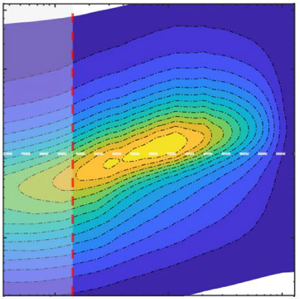Published online by Cambridge University Press: 15 March 2022

The behaviour of a fully rough-wall turbulent boundary layer subjected to different pressure gradients is investigated for different Reynolds numbers using hot-wire measurements. Mean velocity and velocity root-mean-square measurements indicate that the boundary layer remains in a self-preserving state regardless of the pressure gradient. However, different pressure gradients lead to different self-preservation states, as suggested by the lack of collapse of the velocity profile between the pressure gradient cases. The results also indicate that the roughness effect is more important than the pressure gradient; particularly, the closer the wall, the more dominant the roughness effect over the pressure gradient effect on the boundary layer. Finally, both spectral and proper orthogonal decomposition analyses applied to the hot-wire measurements indicate that the pressure gradient impacts predominantly the large-scale motion.